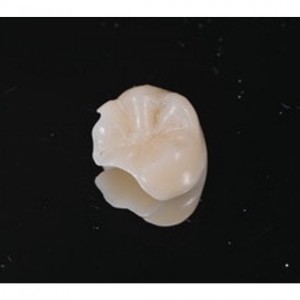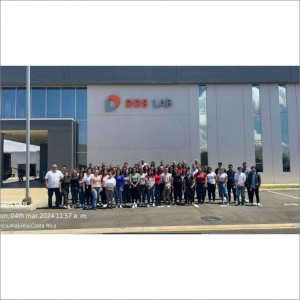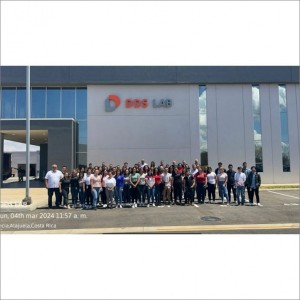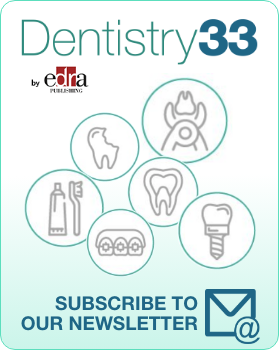
Minimally invasive class II restoration of an upper premolar: a clinical case
Author: A. Colella
Thanks to the introduction of new technologies and more performing materials, in recent years Restorative Dentistry has focused on a less invasive clinical approach. In the age of adhesion, preparing a class II cavity allows to preserve a greater share of healthy tissue than in the past, however the preparation of the cervical step and proximal margins can be a delicate procedure due the risk of damaging the adjacent tooth. Given these premises, protecting the healthy tooth becomes imperative.
In this step-by-step procedure of a class II restoration of an upper premolar the use of special plastic wedges with a steel insert reduces the number of steps and the time required to carry out the procedure, making it safe and predictable.
A female patient aged 16, in a good state of systemic health, comes to my attention complaining about food impact and difficulty in using dental floss in the upper left sextant. On physical examination, a significant accumulation of plaque is seen at the interproximal level. The radiographic examination performed by bitewing revealed a carious lesion of type D3 of tooth 2.5 according to the classification of Marthaler and Lutz. (Fig 1)
After isolating the entire quadrant with rubber dam, a FenderWedge (Directa) was positioned between the elements 2.4 and 2.5, ie a plastic wedge equipped with a steel insert which, in addition to protecting the dam and gently separating the teeth, prevents damage to tooth 2.4 during cavity preparation of tooth 2.5. The FenderWedge was inserted with the help of a dental tweezer and selected from 4 different sizes to ensure the correct separation between two contiguous elements, up to the marginal ridge. The latter is not demolished initially but access to the lesion is obtained by opening the cavity towards the center of the tooth. (Figure 2)
Once the caries was removed, the finishing stage of the cervical step and the buccal and palatal margins of the tooth in question was performed. The resulting cavity is sufficient to properly carry out a restoration with easily refinable and polished edges. At this point the FenderWedge was removed, the adhesive procedures were completed, taking care to protect the adjacent teeth and a second wedge was inserted. The FenderMate (Directa) is equipped with a sectional matrix which in this case perfectly adapts to the cavity design without having to apply an additional separator ring as in traditional sectional matrix systems. (Figure 3,4)
Thanks to the intimate contact between the wedge and the cervical step, it was possible to convert a class II into a simpler class I without incurring in cervical overhangs which make the subsequent finishing and polishing phases longer and more complex, due to the difficulty to remove polymerised composite in a critical area without affecting the contact area just restored. The reconstructed interproximal wall therefore has a close contact and a natural anatomy that make the subsequent steps simpler and more predictable. (Figure 5)
An “all-in-one” adhesive (Universal Adhesive, Parkell) and a thin layer of flowable composite (LC Fill, Parkell) were applied to the bottom of the cavity to avoid the risk of detachment of the newly reconstructed wall during the removal of the FenderMate. The absence of the separator ring allows a wide freedom of movement making it very easy to exploit the residual information of the tooth to obtain, already in the first instance, a more accurate contact surface. (Figure 6)
The latter is however appropriately finished with an abrasive disk and with an Arkansas bur before completing the occlusal surface. (Figure 7)
The residual surface to be restored is very small, therefore the occlusal anatomy can be sculpted with a single increment of composite, modelled with a subtractive technique. Before removing the dam, the finishing stages are performed, in this case limited to the use of a thin finishing strip at the cervical step, the reciprocating handpiece with extra-fine files to polish the tooth-restoration interface, and to final polishing. (Figure 8)
Once the rubber dam has been removed, it is possible to check the occlusion with articulation papers, which demonstrate, in this case, the absence of premature contact. (Figure 9)
With a considerable saving of healthy teeth and chair time, to the benefit of both the patient and the operator, this sectional matrix system allows - in fewer steps - results comparable to those obtained with "traditional" systems. The advantage of immediately obtaining an intimate adaptation of the matrix to the prepared cavity prevents the unpleasant inconvenience, which often occurs with traditional systems when the matrix does not close perfectly, of having to manage the bleeding caused by the displacement of the wedge. When this occurs, the adhesive bond is inevitably invalidated and it is necessary to once again carry out the procedures necessary to restore it.
 Tag
Tag
 Related articles
Related articles
By Lorenzo Breschi and Diego D’Urso
Despite the promising opportunities provided by selective procedures, not all of the clinical procedures in restorative dentistry are supported by good research.
The new guidelines suggest conservative methods to treat tooth decay could lead to better outcomes when used with common restorative materials like fillings or caps.
The expansion is in response to demand and success attained in Dental Implants GPS’ inaugural Southern California centers in Dana Point and Huntington Beach.
In the clinical practice of a dentist, it often happens that you must re-operate on restorations performed in the past and often the most common causes can be traced back to secondary caries,...
By Lorenzo Breschi and Diego D’Urso
The purpose of using biomimetic concept is to conserve tooth structure and vitality, increase the longevity of restorative dental treatments, and eliminate the need for future retreatment. Singer et...
 Read more
Read more
Digital Dentistry 18 April 2024
The Columbia University College of Dental Medicine (CDM) and the Fu Foundation School of Engineering and Applied Science have received approval from the New York State Department of Education to...
Dr. Richard Eidelson, DDS, MAGD, a nationally recognized leader in cosmetic dentistry, is thrilled to announce the opening of his second dental practice, Premier Dentist Philadelphia, located in the...
DDS Lab (DDS), one of the largest full-service dental laboratories in the world, today announced the commencement of operations out of its new state-of-the-art, full-service dental laboratory based...
The global electric toothbrush market size is estimated to grow by USD 2780 million from 2023 to 2027, according to Technavio. The market is estimated to grow at a CAGR of over 8.24% during the...





















d5.jpg)


